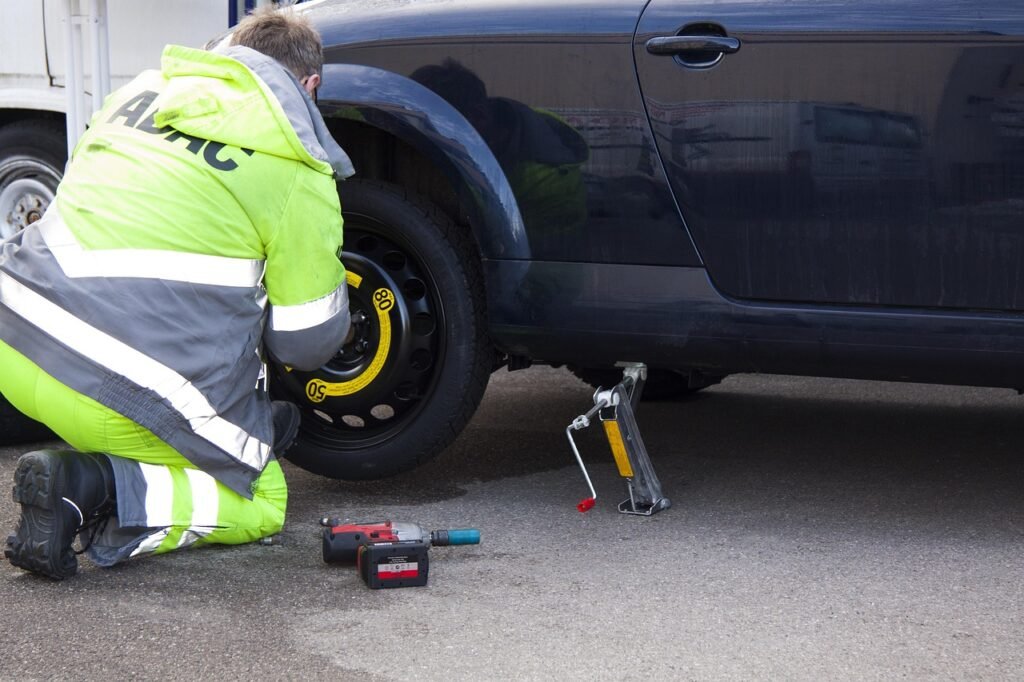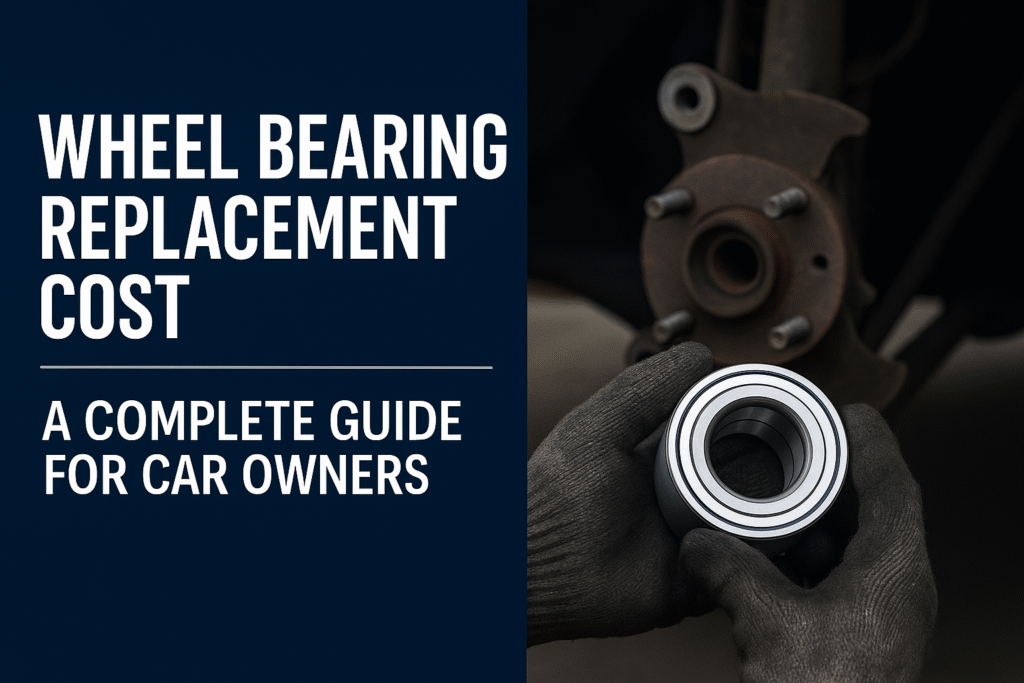When it comes to vehicle maintenance, few components are more critical to your safety than your brake pads. Whether you’re hearing squealing noises or simply wondering when your next brake job is due, understanding the brake pad replacement cost is key to staying safe and financially prepared.
In this guide, we’ll break down everything you need to know, from cost factors and vehicle types to DIY vs. professional repairs. Let’s help you make a smart, informed decision.
Why Knowing Brake Pad Replacement Costs Matters
Brake pads are your vehicle’s first line of defense when slowing down or stopping. As a wear-and-tear item, they need regular replacement—and failing to do so can lead to more expensive repairs like warped rotors or damaged calipers.
Understanding how much it costs to replace brake pads gives you the power to:
- Budget for upcoming maintenance
- Avoid getting overcharged
- Decide between DIY and professional service
- Choose the right type of brake pads for your driving needs
What Are Brake Pads and When Do They Need Replacement?
What Do Brake Pads Do?
Brake pads are the friction material that presses against your car’s rotors when you press the brake pedal. This contact generates the resistance needed to slow and stop your car.
Signs You Need New Brake Pads
Watch for these common warning signs:
- High-pitched squealing or grinding
- Increased stopping distance
- Vibration or pulsation when braking
- Brake warning light on dashboard
- Visibly thin pads (less than 1/4 inch)
Typical lifespan: 30,000–70,000 miles depending on driving habits and pad type.
Average Brake Pad Replacement Cost
On average, you can expect to pay $150 to $300 per axle for a complete brake pad replacement (parts and labor combined).
General Breakdown:
- Brake pads only: $35–$150 per axle
- Labor cost: $80–$150 per axle
Note: You often need to replace both front or both rear pads together—this is called replacing “per axle.”
Cost Differences by Vehicle Type
Economy Cars (e.g., Toyota Corolla, Honda Civic)
- Average: $120–$250 per axle
- Lower-cost parts and easier labor access
SUVs & Light Trucks (e.g., Ford Explorer, Toyota Highlander)
- Average: $200–$350 per axle
- Larger pads and rotors = higher parts cost
Luxury & Performance Cars (e.g., Audi, Tesla, BMW)
- Average: $300–$800+ per axle
- Specialty parts, electronic systems, and premium labor rates increase the price
Brake Pad Material Types and Their Cost Impact
The type of brake pad material you choose significantly affects both cost and performance.
Organic Brake Pads
- Cost: $30–$70
- Quiet and affordable, but wear out quickly
Semi-Metallic Pads
- Cost: $50–$120
- Good performance and durability, slightly noisier
Ceramic Brake Pads
- Cost: $80–$150
- Best for long-term use, low dust and noise
Carbon-Fiber or Performance Pads
- Cost: $150+
- Used in racing or high-performance vehicles
Tip: Always match pad type to your vehicle and driving needs—not just your budget.
Front vs. Rear Brake Pad Replacement Costs
Most vehicles use front brakes more heavily, which means they wear out faster and cost slightly more to replace.
Front Brake Pad Cost:
- Average: $150–$300
Rear Brake Pad Cost:
- Average: $120–$250

Rear brakes may also be part of your parking brake system, adding complexity and labor.
DIY Brake Pad Replacement – Is It Worth It?
If you’re handy with tools, doing your own brake pad replacement can save a significant amount of money.
DIY Brake Job Costs:
- Brake pads (set): $30–$100
- Basic tools: $50–$200 (if not already owned)
- Time: 1–2 hours per axle
However, brake work is safety-critical. If you’re unsure or inexperienced, it’s often better to pay a professional than risk faulty installation.
Professional Brake Pad Replacement – What to Expect
When you visit a shop or dealership, here’s what’s usually included in a brake pad service:
- Brake system inspection
- Pad replacement
- Lubrication of contact points
- Rotor resurfacing or replacement (if needed)
- Brake fluid check
- Road test
Dealership vs. Independent Shop
- Dealership: Often more expensive but uses OEM parts
- Independent Shop: Competitive pricing, sometimes offers better value
Always ask for an itemized quote and make sure the shop is ASE-certified.
Additional Costs That May Arise
Sometimes, replacing brake pads uncovers additional issues that add to the bill:
- Rotors: $100–$300 per axle if worn or warped
- Calipers: $150–$300+ if seized
- Brake fluid flush: $70–$120
- Shop fees, taxes, and disposal fees
How to Save Money on Brake Pad Replacement
Looking to keep your costs down? Try these strategies:
- Look for coupons or service specials from local shops
- Purchase brake pads yourself (if your mechanic allows it)
- Use online tools like RepairPal or YourMechanic to compare estimates
- Combine services (e.g., oil change + brake check) for package discounts
Long-Term Cost Considerations
Choosing cheap pads may save money today but cost more over time.
Cheaper Pads:
- Wear faster, require more frequent replacement
- May damage rotors if too abrasive
High-Quality Pads:
- Better heat resistance
- Longer lifespan = lower cost per mile
Preventive Tips:
- Avoid aggressive braking
- Downshift on hills to reduce brake stress
- Have your brakes inspected regularly
Final Thoughts
Knowing the true cost of brake pad replacement gives you a big advantage whether you’re budgeting for the next service, shopping around for quotes, or deciding to go the DIY route.
To recap:
- Expect $150–$300 per axle on average
- Vehicle type, labor, and pad material all influence cost
- Quality parts last longer and perform better
- Regular maintenance prevents costlier repairs down the line
If you’re experiencing any warning signs, don’t delay. Brakes are your car’s most essential safety feature—and well worth the investment.
FAQs
What factors affect the cost of brake pad replacement?
A few things play into the price: the type of vehicle you drive, the kind of brake pads used (ceramic, semi-metallic, or organic), and the labor rate in your area. Some shops may also charge extra if your rotors need resurfacing or replacement.
Do front and rear brake pads cost the same to replace?
Not always. Front brake pads usually wear out faster since they handle more braking force. They might be slightly more expensive to replace. Rear pads typically cost a bit less, but if you're replacing all four, you can expect to pay around $300 to $600 total.
Can I save money by replacing brake pads myself?
Yes, doing it yourself can cut your costs in half or more. Brake pads themselves can be as low as $35 to $100 per set, and if you’re confident with basic car maintenance, you can skip labor fees. But if you’re unsure, it’s safer to let a pro handle it—brakes aren’t something you want to mess up.
How often should I replace my brake pads?
Most brake pads last between 30,000 and 70,000 miles, but that depends on your driving style and environment. City driving with lots of stopping wears them out faster. If you hear squeaking, grinding, or feel a soft brake pedal, it's probably time to get them checked.



